| |
|
|
|
|
English Family Quick Links
|
|
|
|

|
|
|
|
|
Family 24: Helmsley Turk Mare
 |
VIEW DESCENT CHART
(Old) Lady, by Pulleine's Arabian, is the first mare entered in the General Stud Book from this family. Her pedigree says her dam was by Rockwood, and her grandam by the Helmsley Turk. In an earlier edition of the GSB, the grandam was said to be a mare by Bustler (a son of the Helmsley Turk), but the later edition of the GSB (1891, 5th edition) indicates in a note that the Lowther Stud Book indicated the grandam was by the Helmsley Turk. The Helmsley Turk mare descent is confirmed in a pedigree provided in a Seymour illustration of (Old) Starling from the mid-eighteenth century. Starling was this family's earliest significant racehorse and an important sire, bred, like his granddam, (Old) Lady, by the Duke of Bolton, at Bolton Hall, Leyburn, north Yorkshire. It is through Starling's sister, Camilla (1722), and her daughter, by Mogul, and grandaughter by Squirt (a.k.a. Pratt's Old Mare, 1750), all bred at Bolton Hall, that the family descends to the present.
The Helmsley Turk was located at the great estate of Helmsley in Yorkshire; the lands were first owned by George Villiers, the first Duke of Buckingham, then given in 1651 by Oliver Cromwell to Thomas Fairfax, (3rd) Baron Cameron, who had served as a parlimentarian general in the civil war. Fairfax had a keen interest in horse breeding, and probably owned the Old Morocco Mare, another early foundation mare (Family 6). The estate came back into Villiers ownership through the second Duke of Buckingham, upon his marriage to Fairfax's daughter, after the Restoration. It is not known if the horse was imported or was descended from the horses imported by the first Buckingham, who was responsible for bringing a number of foreign horses into the royal stud for James I. The GSB says the horse was "from the stud of Lord Fairfax, Helmsley, and became the property of the Duke of Buckingham [2nd]." From the probable dates of the Helmsley Turk's offspring, it seems likely the Helmsley Turk mare was born in the 1680s.
J.B. Robertson ("The Origin and History of the British Thoroughbred Horse" in Flat Racing (Lonsdale Library, Vol. XXVIII, J.B. Lippincott Co.) says the Helmsley Turk mare was in the Lowther stud "about 1685." This would have been the stud of Sir John Lowther, first viscount Lonsdale, a privy counsellor and later Lord of the Privy Seal under William III, whose principal seat was in Westmoreland. Rockwood, sire of the second mare in this family lineage, was a son of the "Lonsdale Tregonwell Barb Mare" (Family 1); his sire is not known at present. Rockwood is sometimes referred to as Pulleine's Arabian; Thomas Pulleine (the elder) was master of the royal stud to King James II, and served as high sheriff of Yorkshire in 1696 and 1703. Because (Old) Lady was by Pulleine's (Chestnut) Arabian, it is probable she, and her dam by Rockwood, were bred by Pulleine. In correspondence with John Holles, Duke of Newcastle, in 1706, Pulleine refers to a six year old mare "gott by my white Turke yt's [that's] deade" who is "wth foale I beleive to my Arabian." Other mares mentioned in the letter are also listed as in foal to his "Chessnutt Arab" (C.M. Prior, Early Records of the Thoroughbred Horse (London: The Sportsman Office, 1924). It seems possible that Rockwood is one and the same as Pulleine's "white Turke." As noted earlier, (Old) Lady, bred by the Duke of Bolton, was by Pulleine's (Chestnut) Arabian.
The Brownlow Turk sired Grey Grantham, a racehorse and sire of a famous racemare, Miss Belvoir (Family 6) and others, and was probably the property of Sir John Brownlow of Lincolnshire. He also got the "son of the Brownlow Turk." The son of the Brownlow Turk is only seen in the GSB in this family's pedigree, and whose dam is not known; his daughter, out of (Old) Lady, was bred in the Bolton stud, as was the filly by Jigg, who became the dam of Patriot, a good racehorse, also bred by the Duke of Bolton. All of the progeny noted in the GSB from the mare by the son of the Brownlow Turk were by the great racehorse and sire, Bay Bolton, and bred by the Duke of Bolton, including Camilla (1722) and (Old or Bolton) Starling. Mogul, a good race horse and sire of Whistlejacket, immortalized by artist George Stubbs, was bred by the Earl of Godolphin, and sold to the Duke of Bolton in 1739; Camilla's daughter by Mogul, also bred in the Bolton stud, was thus born sometime after that date.
The filly by Squirt (1750) and out of the Mogul mare was also bred in the Bolton stud, and came into the possession of John Pratt by the age of 5, when she produced her first foal, Virgin (1755) for him. Pratt was a gentleman jockey, owner and breeder, who built a house and stables at Askrigg in Wensleydale, north Yorkshire, near Bolton Hall, in the mid-eighteenth century. She became known as Pratt's Old Mare, or Pratt's Celebrated Mare, celebrated because, according to the GSB, "Of the 17 foals this mare produced, 3 were never trained, 2 died young, and the other 12 were good runners." Among these were Pumpkin; Maiden, who ran second in the 1774 Jockey Club Plate at Newmarket, and won a 100 guineas purse there that year, and was dam of Precipitate and Gohanna; and Matron, through whom the family descends.
Even though several other families with lower rankings by Bruce Lowe had more classic winners than the sole--even to this date--English classic winner, The Baron, in this family, Lowe placed this family as number 24, apparently because "...some of the males of the family have been such excellent sires that it almost deserves the rank of a sire line..." He was referring principally to The Baron, sire of Stockwell (the "Emperor of Stallions") and Rataplan, and Camel, sire of Touchstone, but the family has produced a number of other influential--at least in the short term--stallions, including (Old) Starling, Gohanna (sent a branch of the Darley Arabian line forward through son Golumpus), and Hindoo (sire of Hanover), and the good filly-getters Pumpkin and Precipitate.
|
Helmsley Turk Mare's
Known Produce:
Mare by Rockwood. Dam of
f. (Old) Lady by Pulleine's Arabian. Dam of
f. Mare by son of the Brownlow Turk. Dam of
f. Camilla (1722) by Bay Bolton
c. Camillus (17--) by Bay Bolton
f. Wanton (17--) by Bay Bolton
c. Spark (c. 1720) by Bay Bolton
c. (Old or Bolton) Starling (1727) by Bay Bolton
f. Mare by Jigg. Dam of
c. Patriot (1729) by Bay Bolton
c. unnamed (1732) by Young Childers
|
|
|
FAMILY #24 NOTABLE DESCENDANTS
|
|
|
|
|
Family #24 St. Leger Winners
|
|
|
| |
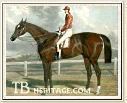 |
| |
The Baron |
|
1845 THE BARON ch.c. 1842
(Birdcatcher - Echidna) |
|
|
Family #24 Other Family Members
|
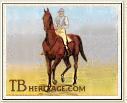 |
|
Banker
|
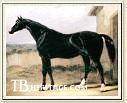 |
|
Camel
|
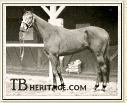 |
|
Carry Back
|
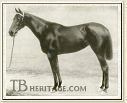 |
|
Firenzi
|
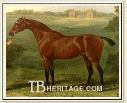 |
|
Gohanna
|
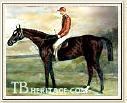 |
|
Hindoo
|
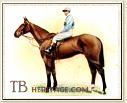 |
|
Jenkinstown
|
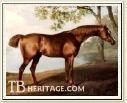 |
|
Pumpkin
|
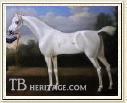 |
|
Starling
|
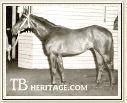 |
|
Tulloch
|
|
Banker ch. c. 1860
(Boiardo - Jeannette)
One of a number of good horses got by imported Boiardo, he won the Melbourne Cup in 1863. His brother, Barwon, was a top racehorse, winning the VRC Derby Stakes, Australian Cup and St. Leger, and the DJC Australian Champion Sweepstakes in New Zealand. |
Camel dk.br. c. 1822
(Whalebone - mare by Selim)
One of the two most significant sons of Whalebone (the other, Sir Hercules), a powerfully-built, almost black, horse of only fair ability on the turf--he placed second in the Newmarket Stakes in 1825, and won the Port Stakes at Newmarket in 1826, his two best races. In the stud he earned everlasting fame as sire of the great Touchstone, and through him tail-male ancestor of innumerable great racehorses and sires, such as Newminster, Carbine, Spearmint, Cotherstone, and Orlando. Also got Caravan, who was a good sire of such horses as Souvenir (Prix du Jockey Club); St. Leger winner Launcelot; Brown Bess (race winner and second dam of Musket); Hester, dam of The Nabob and important in Family 12; Honoria, ancestress of Leamington. His sister, Camelina, was tail-female ancestress to Hindoo (see below). His half-sister, a mare by Frolic, was second dam of Mountain Sylph, who, when bred to Touchstone, produced the stakes winners Mountain Deer and Claret. |
Carry Back br. c. 1958
(Saggy - Joppy)
Idolized by the American public, the unfashionably-bred, small (15.1 hands), late-charging colt won 9 of his 16 races at age 3, including the Kentucky Derby and the Preakness Stakes, coming up lame and seventh in the Belmont, but later winning the Jerome and Trenton Stakes, and he was voted champion of his year. At age 4 he proved a good handicapper, winning the Metropolitan Mile and equalling a track record, and won several other races, then was sent to France to contest the Arc, in which he ran unplaced. Retired to stud, but brought back after one season to again--he placed third in the Washington International. Not a success at stud; grandsire of the stakes winning filly, Miss Baja and sire of the good long-running filly Toter Back (Matron Stakes, Orchid Handicap). |
Firenzi b. f. 1884
(Glenelg - Florida)
A "queen of the turf" in the U.S., winning the Nursery Stakes and several other races at two, and going on at three to win all the major races for fillies, and going up against the colts, beating Hanover in the Jerome Stakes. Between ages 4 and 6 she won 32 of her 57 starts, including the Monmouth Cup (twice), the Champion Stakes, the Monmouth Handicap, the Manhattan Handicap, the Freehold (twice), New York and Harvest Handicaps. More of a stayer than a speedster, she could beat horses such as Kingston at a mile and a half or more. Through daughter Fiesole, third dam in tail-female of 1920 Kentucky Derby winner Paul Jones; also ancestress of the good race filly Petrify (1939, Spinaway Stakes, Arlington Lassie Stakes). Her dam was full sister to Hindoo (see below). |
Gohanna b.c.
1790
(Mercury - mare by Herod)
Good racehorse, second only to Waxy in his generation, later good sire of fast stayers. |
Hindoo b.c. 1878
(Virgil - Florence)
Champion U.S. horse of 1881, and one of the great horses of the American turf, he won 30 of his 35 starts, ages 2 to 4, at distances up to 2 1/4 miles. Sold to Runnymede Stud in Kentucky, where he stood at stud, second in the leading sires list in 1887. He got the great racehorse and sire Hanover, and the good race horse Jim Gore, in his first season. He is seen in pedigrees today through his many successful and prolific daughters, the most notable being Sallie McClelland, the dam of Audience and ancestress of such horses as Top Flight, The Nut, Crusader, Misty Isle and Whisk Broom. Other daughters were tail-female sources of such runners as Laura Dianti, Scapa Flow, Bull Page, Gilded Knight, Dedicate, Duc de Fer, Rose of Sharon, Chilhowee, Happy Gal, Canter, Rosemont and many more. |
Jenkinstown b.g.
1901
(Hackler - Playmate)
Contested the Grand National at Aintree four times, and won in 1910, owned and trained by the same trainer (Tom Coulthwaite) - owner (Stanley Howard) team that won the event with Eremon in 1907. He won two chases in Ireland at age 6, and one other race in 1909 before his Grand National win, and placed second in the Grand Sefton in 1911; he died in 1912. His dam, from a long line of Irish-bred mares, was by Playactor, a 'chaser sire in Ireland, and her dam, Princess Royal was by Artillery, a leading jumper sire in Ireland. Hackler was a leading steeplechase sire who got three Grand National winners. |
Precipitate ch.c.
1787
(Mercury - mare by Herod)
Fair eighteenth century racehorse and sire, sent to America at age 16. |
Pumpkin ch.c.
1769
(Matchem - Pratt's Old Mare)
One of Matchem's best sons on the race course. |
Rockingham b. c. 1781
(Highflyer - Purity)
Racehorse of the 1780s, sire of Oaks winner Bellina. |
(Old or Bolton) Starling gr.c.
1727
(Bay Bolton - mare by son of Brownlow Turk)
Prominent early racehorse and sire. |
The Baron ch. c. 1842
(Birdcatcher - Echidna)
First ran at age 3 in his native Ireland, winning some races in Ireland, including the Kirwan Stakes and Waterford Stakes; poor management, including beating, muzzling and bar shoes for his "festering soles," he had a reputation for a savage temperament. Sent to England to run, he had a salubrious change of ownership, and his new trainer, the famous John Scott got him in shape and schooled for the St. Leger, which he won over a big field, followed by a win of the Cesarewich. Sold on again, placed second in the Craven Stakes at age 4, and placed in some smaller races. Sold to John Theobold who placed him at his Stockwell Stud where he entered thoroughbred history by siring Stockwell, "the Emperor of Stallions," and his brother Rataplan, both principal conduits of the Darley Arabian sire line; sold to France in the late '40s, he got the champion race filly La Tocques and the good producer Vermeille, dam of French and German classic winner and good sire Vermouth. |
Tulloch b.h.
1955
(Khorassan - Florida)
One of Australia's all-time great racehorses, considered by many the best in the world during his time, he was purchased in New Zealand as a yearling. He won 36 times in 53 starts to age 6, twelve times second and four times third, unplaced only once in his long, hard career, in which he was kept running to exceed the £100,000 winnings mark his connections had set for him (he earned £110,123). Brilliant at age 2, his best season was his three year old year, winning the A.J.C. and V.C.R. Derbys and St. Legers, and the Caulfield Cup, in the latter taking a second off the Australian record for 12 furlongs. He fell sick at age 4 and was not seen on the racecourse again until the latter part of his 5 year old year, his wins that year including the VRC Queen's Plate, the AJC Queen Elizabeth Stakes, the AJC Autumn Stakes and the Queensland Turf Club P.J. O'Shea Stakes. At age 6, flown all over the country to compete, he won ten races, placed second five times, third three times and had his only unplaced start (Melbourne Cup); his wins included the Brisbane Cup, AJC Craven Plate and the Autumn Cup again. A relatively small -- 15.2 hands -- and game horse of the highest racing class, he broke a number of track records over distances from 5 furlongs to 2 miles, usually carrying the highest weight. In his last race, the Brisbane Cup, he gave away 22 pounds and still won by 2 lengths at age 6. Disappointing at stud, his total offspring earnings of $182,366 were less than what he himself had won at the track. He died in 1969. His dam was a tough runner, starting in 60 races and winning 4, including the Avondale Cup and the Avondale J.C. in New Zealand; she also produced Tulloch's Sister who had 4 wins, but was nothing like her brother. His second dam, Island Linnet won 8 races from 88 starts, and also produced Oklahoma who won on the flat and over jumps. |
Walnut b. c. 1786
(Highflyer - Maiden)
Won Great Subscription Purse at York; sired Ashton, 1809 St. Leger winner. |
|
| |
|
|
|
|
|

